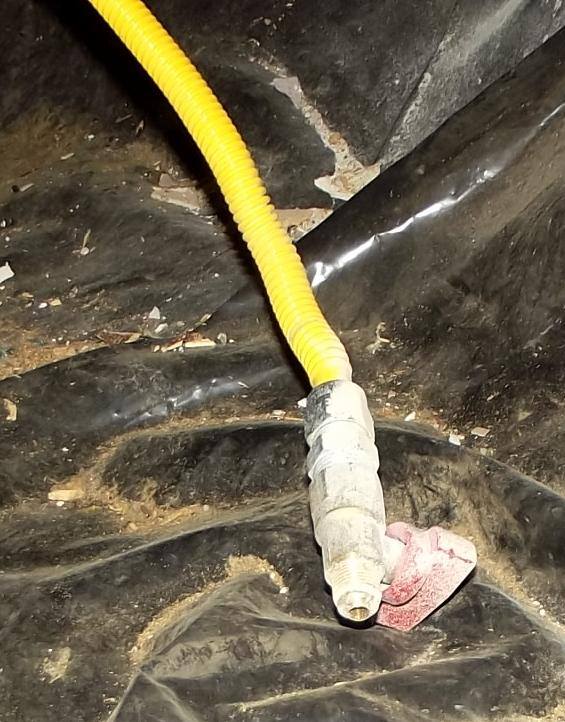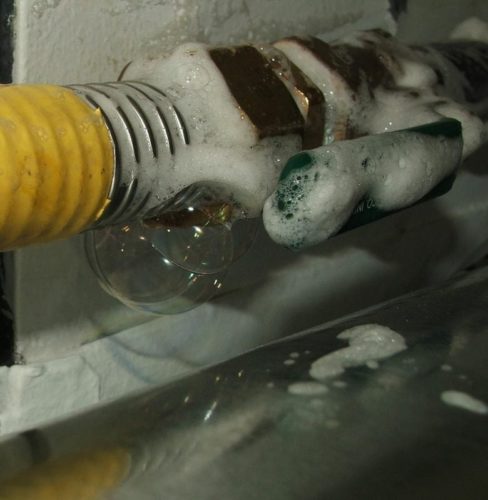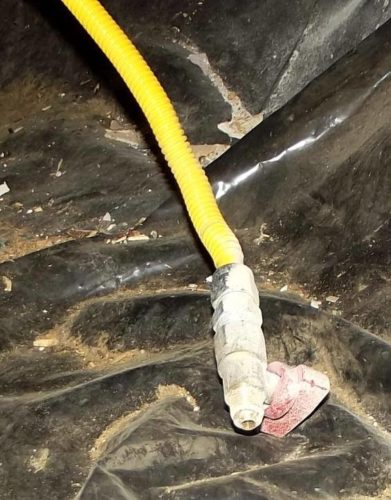
I am generally not much of an alarmist when it comes to home inspections.

After all, houses are nothing more than earth, water, fire, and air combined together in a form that we can call shelter. Everything can be either fixed or replaced–all it takes is time and money along with the decision as to which is necessary–and how much.
Sometimes it makes more sense financially to find another assemblage of earth, water, fire, and air–but that is usually done out of choice, as opposed to anything inherently wrong with the “other” house. Someone else might be totally fine with throwing the necessary resources at it.
Of course sooner or later all houses succumb to one or more of their basic elements–no longer combined in such a manner as to constitute proper shelter. A bulldozer is merely another form of earth, water, fire, and air.
As one can imagine, in terms of the components of a house, some of the basic elements had best be kept in proper proportions or disaster could be the result. The element I want to talk about today is “air,” or more accurately “gas.” We have done a pretty decent job of keeping natural gas contained in pipes. Leaks are still common and dangerous explosions of natural gas, while rare, do occasionally happen. Every once in a while we hear about a house or even a whole neighborhood being leveled by a gas explosion.
Not only do actual gas leaks “un-glue” me as a Seattle Home Inspector–the mere possibility of gas leaks un-glue me almost as much.

A common gas piping defect that Home Inspectors find is where points of use have been abandoned and not properly capped. Sure, there may be a gas shut-off present, and not leaking, but the potential for the shut-off being hit and inadvertently turned on represents a serious safety issue to me.
In an area accessible to children, that bright red knob represents a dangerous attraction to a child.
The tiniest of leaks occurring in a closed-up house can have disastrous consequences if the gas builds up and a spark occurs–such as entering the home and flipping on a light switch.
At a recent inspection I found such an abandoned pipe in a place I have never found one before. In a crawl space. Because the abandoned pipe was a flexible type pipe it is even more vulnerable to damage than a rigid pipe would be. That it was laying on the ground where the valve could be hit by anyone crawling around in the space seemed a little scary to me.
While the serious rodent infestation in this particular crawl space would not likely result in the gas valve being turned on, how about if it was an infestation of raccoons? The antics of raccoons in a crawl space could certainly result in the gas valve being inadvertently turned on. A gas explosion in a crawl space, at best, could only be described as an extreme approach to vermin control.
It is time to remove the flexible piping and properly cap the gas pipe to eliminate a possibly dangerous condition.
If you have any locations in your home where gas is no longer being used, make sure the pipes are properly capped.
By Charles Buell, Real Estate Inspections in Seattle
If you enjoyed this post, and would like to get notices of new posts to my blog, please subscribe via email in the little box to the right. I promise NO spamming of your email!